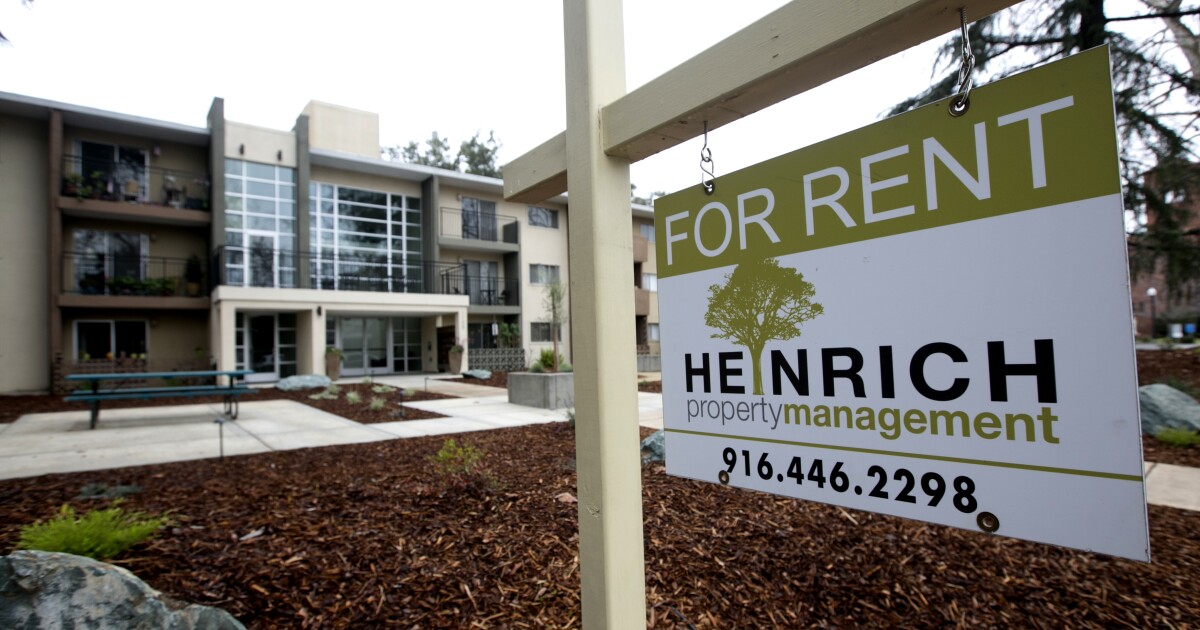An estimated 2.4 million Californians could see their tax refunds increase next year under a legislative proposal that would dramatically increase the state tax credit for first-time renters in addition four decades.
The amount of the grant — created to help income-eligible Californians who don’t get homeowner tax breaks — has remained unchanged since 1979, never adjusted for inflation and doesn’t match the relentless rise in homeowners’ tax rates. statewide rentals.
Renters earning less than $43,533 a year qualify for a $60 tax credit, and renters earning less than $87,066 a year who are married and file taxes jointly are eligible for $120.
A bill proposed by State Sen. Steve Glazer (D-Orinda) would increase those credits to $500 for single filers and $1,000 for joint filers and single filers with dependents. The bill, which will be heard by the Senate Appropriations Committee this month, would also make the credit refundable, which could trigger a significant increase in tax refunds next year.
California’s current tenant tax credit model is non-refundable, which means it can reduce a taxpayer’s debt to the government, but cannot be added as additional money. to a refund. This rarely benefits California’s lowest earners, who often have no tax liability, thanks to other exemptions and the state’s progressive income tax structure that heavily depends on those who earn the most. .
With soaring rents and the inevitable end of eviction protections granted amid the pandemic, boosting credit is now crucial, Glazer said. While the Legislative Assembly continues to propose ways to increase housing supply, little has been done to provide direct assistance to tenants, he said.
“When it comes to tax relief in the public house, tenants have been on the doormat outside for decades,” Glazer said. “Tenants are typically the poorest of the poor, and they should be a state priority for help.”
California renters pay 44% above the national median, while California’s median household income is 22% above the national median, according to a report by the nonpartisan Public Policy Institute of California.
While the median monthly rent in California was $1,586 from 2016 to 2020, according to US Census data, costs are much higher in Los Angeles and other cities. Data compiled by rental market tracker RedFin put the average rent in Los Angeles earlier this year at $3,394 per month.
State Senator María Elena Durazo (D-Los Angeles), co-author of the proposal, Senate Bill 843, said it is not a solution to the myriad housing problems in California, but in a way to have an “immediate impact”. In Durazo District, which includes Boyle Heights and Highland Park, 77% of his voters are renters.
“To me, it not only helps those who might be homeless and at risk of ending up on the streets, but it gives stability to those families so they can become homeowners,” Durazo said at the premiere. committee hearing of the bill in March, where it was unanimously approved.
If passed into law, SB 843 would require the state’s Franchise Tax Board to increase the amount of renters’ credit each year based on inflation. The credit would no longer distinguish between single people with dependents and joint filers, in an effort to make credit fairer for single parents, Glazer said.
The increased California tax credit for renters would last for five years and would require legislative approval to extend beyond that. And it would be costly: Glazer’s office estimates the potential cost to the state is $2.5 billion a year, which his team called “just a fraction” of the annual tax relief for homeowners, which amounts to approximately 6 billion dollars.
The current cost of the tenant tax credit to the state is $140 million.
“When you give homeowners tax refunds five times, you’re saying, ‘We appreciate you more as an investor in our state and as a vital part of our community,'” said David Knight, director executive of California Community Action Partnership Assn., a supporter of the bill. “It’s just the justice of it all and the social impact of being valued as much as a landlord.”
Nearly 17 million Californians, or 44% of the state’s population, are renters, and more than half are “cost overloaded” because rental costs exceed 30% of their income, according to the California Budget & Policy Center, an organization that advocates for programs benefiting the state’s low-income residents. And compared to white Californians, more than twice as many black, Latino and Asian American renters struggled to pay rent, according to a report released this month by the UCLA Center for Neighborhood Knowledge.
Knight said for some Californians, an extra $500 can be the difference between paying rent and being evicted.
“Sometimes we forget that it only takes a little more to help prevent a percentage of the population from going from a bad situation to a catastrophic situation,” he said. “We already have enough people in a catastrophic situation. We cannot continue to push people into homelessness.

